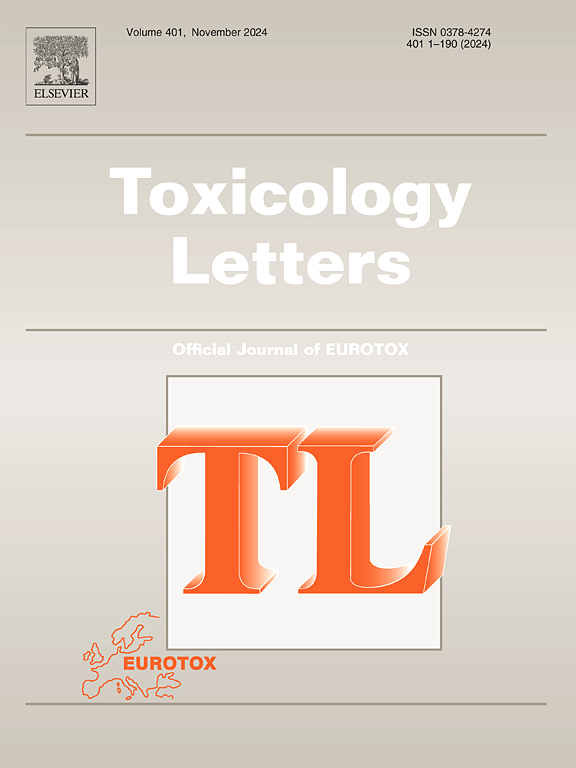Dose-dependent effects of chlorpyrifos on liver injury, intestinal dysbiosis, and metabolic perturbations in C57BL/6J mice
IF 2.9
3区 医学
Q2 TOXICOLOGY
引用次数: 0
Abstract
The organophosphorus pesticide chlorpyrifos (CPF) is widely utilized in agriculture to protect crops from pests and diseases. Concerns regarding its extensive use have emerged due to the substance's persistence, bioaccumulation, endocrine disruption, and associated toxicity, which may lead to various adverse reactions. In this study, 32 male C57BL/6 J mice were orally administered varying doses of CPF over a period of two weeks. Metabolic perturbations resulting from subacute exposure to CPF were assessed using LC-MS/MS-based untargeted metabolomics, alongside biochemical analysis and histopathological techniques. The 16S rRNA gene sequencing method was employed to evaluate changes in the gut microbial community within the cecal contents of mice exposed to CPF. In vivo studies have shown that CPF exposure induced dose-dependent damage and dysregulation of the intestinal microbiota in mouse colonic tissues. This was characterized by significant alterations in the gut microbiota, increased intestinal permeability and elevated levels of lipopolysaccharides. These changes may have compromised intestinal barrier function and facilitated the transfer of intestinal microbial metabolites and endotoxins to the liver, subsequently leading to liver injury. Collectively, this study elucidates a potential mechanism by which CPF triggers liver injury through alterations in the intestinal microbial community and increased intestinal permeability. These findings not only enhance our understanding of the toxicological effects of CPF but also contribute to the assessment of health risks associated with CPF exposure.
毒死蜱对C57BL/6J小鼠肝损伤、肠道生态失调和代谢紊乱的剂量依赖性影响
有机磷农药毒死蜱(chlorpyrifos, CPF)在农业中被广泛应用于农作物病虫害防治。由于该物质的持久性、生物蓄积性、内分泌干扰和相关毒性,可能导致各种不良反应,人们对其广泛使用感到担忧。在这项研究中,32只雄性C57BL/6J小鼠在两周内口服不同剂量的CPF。使用LC-MS/MS-based非靶向代谢组学以及生化分析和组织病理学技术评估亚急性CPF暴露引起的代谢扰动。采用16S rRNA基因测序方法评估CPF暴露小鼠盲肠内容物内肠道微生物群落的变化。体内研究表明,CPF暴露会引起小鼠结肠组织中肠道微生物群的剂量依赖性损伤和失调。其特点是肠道菌群显著改变,肠道通透性增加,脂多糖水平升高。这些变化可能损害了肠道屏障功能,促进了肠道微生物代谢物和内毒素向肝脏的转移,从而导致肝损伤。总的来说,本研究阐明了CPF通过改变肠道微生物群落和增加肠道通透性引发肝损伤的潜在机制。这些发现不仅增强了我们对CPF毒理学效应的认识,而且有助于评估与CPF接触相关的健康风险。
本文章由计算机程序翻译,如有差异,请以英文原文为准。
求助全文
约1分钟内获得全文
求助全文
来源期刊

Toxicology letters
医学-毒理学
CiteScore
7.10
自引率
2.90%
发文量
897
审稿时长
33 days
期刊介绍:
An international journal for the rapid publication of novel reports on a range of aspects of toxicology, especially mechanisms of toxicity.
 求助内容:
求助内容: 应助结果提醒方式:
应助结果提醒方式:


